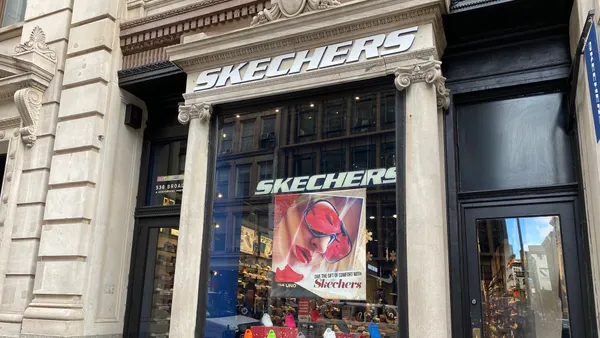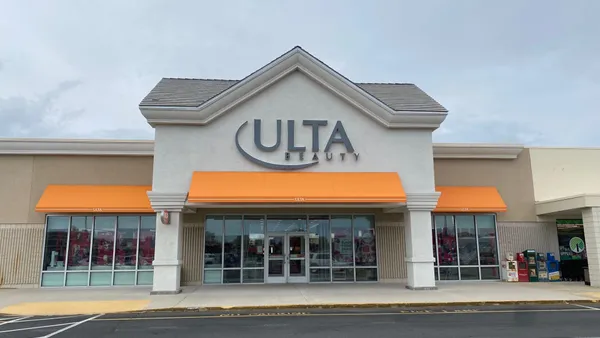Dive Brief:
- Even as Rite Aid's sales grew more than 12% in the first quarter, the drugstore retailer operated at a loss in the period, according to a press release.
- Rite Aid's Q1 net loss came to $72.7 million, an improvement from the previous year's loss that the company attributed to a credit under its financial reporting method. During the quarter, the retailer also took on new costs associated with COVID-19, including hiring an additional 6,000 associates for its store and distribution workforce.
- As the retailer continues struggling to turn a profit, it announced an exchange offer on $750 million worth of bonds due in 2023. The exchange would push out their maturity to 2026 in exchange for a higher interest rate.
Dive Insight:
Rite Aid says it has been on the "front lines" of the COVID-19 crisis, with the company's stores open as essential retail while the pandemic mounted in the U.S. and as nearly 100 of those stores became testing centers for the disease.
Its position as a drugstore amid a global health care crisis shows in the numbers. Its Retail Pharmacy Segment revenues were up 6.7% year over year, to $4.1 billion. Rite Aid's retail business showed an even stronger improvement, with the company's front-end same store sales (excluding tobacco products) up 16% thanks to increases in cleaning products, sanitizers, wipes, paper products, liquor, over-the-counter products and summer seasonal items, according to the company.
Despite the revenue boom, Rite Aid's bottom line still struggled, as COVID-19 costs and other expenses took their toll, and as a services contract with Walgreens came to completion. Along with additional hires, Rite Aid provided bonuses to store managers and "pandemic pay" that, according to the company, "ensures associates are compensated if diagnosed with the virus or quarantined because of exposure."
The losses makes things more difficult for the retailer's $3.3 billion in long-term debt and other liabilities. The retailer in Q3 of 2019 was able to break a cycle of losses, briefly, with sales increases and a positive profit but returned to a loss in Q4. Pushing out its maturities would give the retailer time to orchestrate a turnaround without taking more dramatic actions should its debt fall into deeper distress.
Rite Aid has struggled to stabilize its bottom line and hold on to market share as it tries to compete with massive competitors CVS and Walgreens — which keep getting bigger through acquisitions and partnerships. By contrast, Rite Aid is "structurally disadvantaged," with regional concentration and a lack of national scale, Fitch analysts said in October as they downgraded the retailer's long-term default rating.
Since then, COVID-19 has disrupted and defined the entire retail world, for both discretionary retailers and those that have stayed open. Essential businesses have by and large seen their sales spike, but added costs and shifts in spending have also made it difficult for many to turn a profit even while open.
"There are certainly challenges brought about by COVID-19, including the decline in acute prescriptions and increased costs incurred to assure the safety of our associates and customers," CEO Heyward Donigan said in a statement. "No matter the challenge, we can execute our strategy and deliver day-to-day operational excellence in the face of a pandemic."














